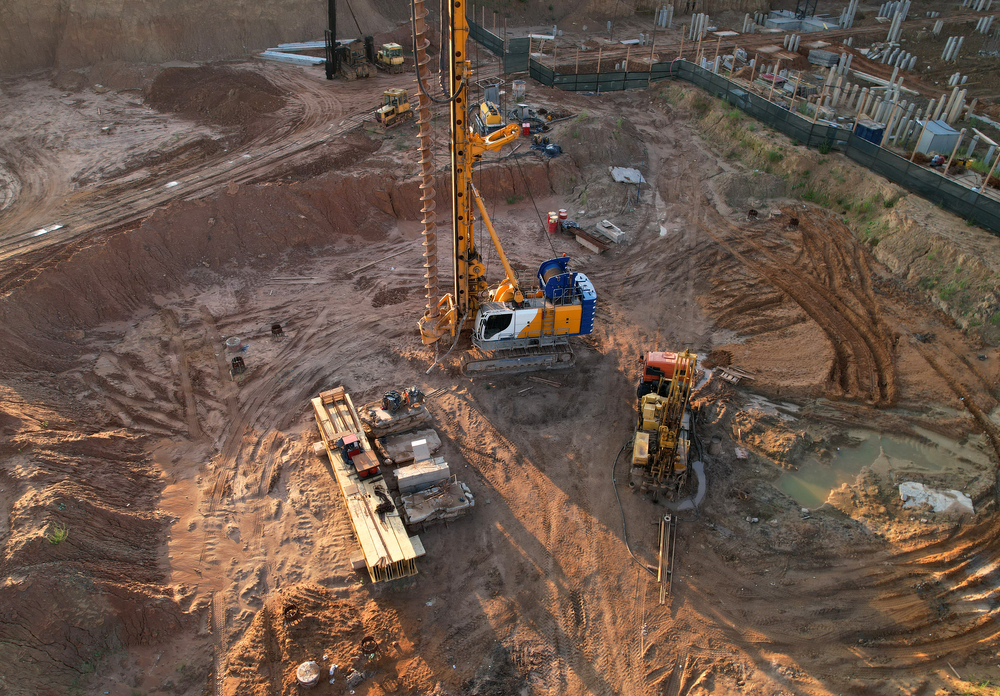Things about Geotheta
Things about Geotheta
Blog Article
Geotheta Things To Know Before You Buy
Table of Contents9 Simple Techniques For GeothetaSome Of GeothetaLittle Known Questions About Geotheta.Geotheta for Dummies
They team up with civil designers, structural designers, architects, and other experts to incorporate geotechnical factors to consider into the total task style and building process. This requires reliable team effort, sychronisation, and communication to guarantee that the geotechnical facets line up with the project objectives and fulfill regulative requirements.Mining & Products Design: Concepts of drilling, penetration prices, and aspects impacting the choice of boring method. Qualities of dynamites, firing systems and blast patterns. Blowing up methods in surface and below ground workings. Unique blasting methods at excavation borders. Vibration and noise control. Mechanical and continual approaches to fragmentation, consisting of longwall shearing and fullface boring.
Modelling of piece and particle size distributions; comminution as a transfer feature. Comminution modern technology: squashing, grinding, dimension classification. Integrated analysis of fragmentation and comminution procedures. Provided by: Mining & Products Design.
Little Known Questions About Geotheta.
Bachelor's level programs in civil, geotechnical, geological, and environmental design normally last 4 years and include basic education and learning training courses in English, social scientific research, and the liberal arts, as well as training courses in advanced maths, structural geology, and liquid mineralogy. (https://geotheta.wordpress.com/2024/08/02/unlocking-the-secrets-of-geotechnical-engineers-the-geotheta-advantage/)
Geotechnical engineering entails the evaluation of the dirt and rock conditions at a particular site, and their implications for the development of that website. As most frameworks depend on the ground for assistance, it lacks surprise that a comprehensive understanding of the ground conditions, and the suitability of foundation systems, are essential to the long-lasting stability and efficiency of the structure or framework.
Specialising in the examination of geological developments and ground behavior, geotechnical engineers carry out clinical investigations and screening to understand the effect these geological formations might carry the layout and building of building, civil and framework jobs. This expertise is crucial for the style and building and construction of structures, roadways, tunnels, dams, bridges, and water supply and sewer systems.
The geotechnical group at Douglas Partners routinely talk to engineers, design designers, designers, and builders to make referrals on design and advancement proposals to guarantee that the built structures are suitably developed for the ground problems. For example, the design of footing systems requires to consider the weight of the structure, the capability of the ground to sustain that weight together with activity resistances and effective building and construction.
Geotheta Things To Know Before You Get This
This job is greatly streamlined by the use our Douglas Map geospatial platform that makes this details easily available in an easy to make use of web internet browser interface. A geotechnical designer will guide the drilling of boreholes and test pits to collect dirt and various other samples, and likewise assess surface area features and ground direct exposures to create a geotechnical design of the subsurface problems.
Depending on the job kind and ground problems experienced, research laboratory screening might among various other points evaluate stamina, compressibility, sensitivity and/or permeability of soil and rock examples. Hereafter information is collected and collected, the outcomes are made use of for a geotechnical model of the site, which is typically presented as areas throughout the website.

A geotechnical examination naturally can only evaluate the ground problems at the places pierced or dug deep into. All-natural variations in soil and rock conditions can take place throughout a website and in between examination locations. It is for that reason great technique that the geotechnical designer be preserved throughout construction of the project to offer on-site verification that the ground conditions run into follow our website the assumptions and guidance given in the geotechnical examination record.
What Does Geotheta Mean?
Geotechnical engineers use their comprehensive understanding of dirt and rock to evaluate threat and fix problems on diverse infrastructure projectsGeotechnical engineering is a specialist branch of civil design which takes a look at the behavior of earth products and the application of dirt and rock technicians. Tailings Engineer. As a geotechnical designer, you will examine the physical, mechanical and chemical properties of dirt and rock in order to develop structures, maintaining structures and earthworks
Geotechnical engineering is very closely linked to and overlaps with, both design geology and ground engineering - https://realistic-swam-lvtf1k.mystrikingly.com/blog/unlocking-the-secrets-of-geotechnical-engineers-the-geotheta-advantage. It's possible to specialise in geotechnics or help a geotechnical firm yet be called a design geologist or a ground engineer. As a geotechnical engineer, you'll require to: construct and keep relationships with customers and various other specialists associated with the site, throughout each projectmaintain safety and security standards on site be mindful of price implications when you make recommendationsstudy geological maps and aerial photographs from a range of sources and from various time periodsexamine building prepares to see exactly how practical they are based upon your understanding of the siteinvestigate threats or geological threats for the sitesearch for ecologically delicate features, such as garbage dump begin to establish valid and expository ground modelsplan field investigationsdrill and analyse examples of bedrock, soil, groundwater and added products oversee various other professionals on sitesolve technological problems as they emerge, such as unforeseen structures at drill sitesmonitor conditions throughout and after building to see to it frameworks are stable in the short and lengthy termadding data gathered on website to your preliminary researchcreating geotechnical estimations, drawings, and 2 or three-dimensional computer designs analyzing the datamaking recommendations concerning the proposed usage of the website

Report this page